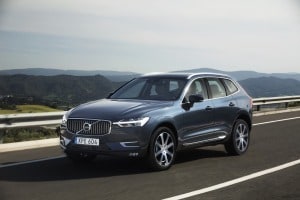Can Auto Suppliers Keep Pace with Rising Car Sales?
Can auto suppliers keep up with the brisk pace of U.S. car sales? Already, signs point to a strained supply chain, but suppliers are reluctant crank up more production.
Industrial Darwinism weeded out the weak auto suppliers during the Great Recession. Auto company staffers who helped keep failing suppliers afloat during the recession now resemble the Maytag repairman with little to do. Suppliers that survived are now thriving, having whipped their houses in order much as the automakers did by ditching excess plant capacity, firing workers and generally cinching the financial belt a couple notches tighter. Like U.S. automakers, suppliers pushed their breakeven point so low they can make money on a scant 10-million-vehicle sales year, just shy of the 10.4 million vehicles the industry sold in 2009. Now with the industry running at 14.5 million vehicles in the first quarter, suppliers are making hefty profits — with less people, less factory space and less debt.
Meantime, their customers — the auto companies — are boosting output to keep pace with buoyant sales demand. General Motors, Ford and Chrysler have increased full-year U.S. sales forecasts to the 14.5 million vehicles or more. Just this week, the 2013 Nissan Altima rolled down the line in Smyrna, Tenn., with Nissan announcing it would run three shifts instead of two for the revamped midsized sedan. IHS Automotive says, in fact, 20 North American auto plants will operate with three shifts or three worker crews by year-end compared with less than a half-dozen a few years ago. Chrysler and Ford just announced shortened or curtailed summer shutdowns to boost production of several models including the Fiat 500 and Jeep Grand Cherokee as well as Ford Explorer and Ford F-150. Honda has added overtime at an Ohio plant to make the CR-V; Toyota is bumping up four-cylinder engine production.
Automakers are urging suppliers to follow suit, but they aren't rushing headlong to do so. "Suppliers are telling us they are not increasing capacity, adding more employees or spending on plants and equipment — or doing anything that requires taking on more debt. They are pushing back on incurring higher fixed costs," said John Henke, CEO of Birmingham, Mich.-based Planning Perspectives, which recently surveyed suppliers about their relationships with automakers in the U.S. Henke said suppliers aren't confident in the recovery in terms of its strength and length. Suppliers also cite this fall's elections as adding further uncertainty in terms of their costs for business taxes and health care, said Henke. And yet, he adds, the current supply base is not capable of 12 million to 14 million vehicles a year in the U.S. on an ongoing basis.
As a result, the stretched-thin supply chain globally is destined to cause hiccups in vehicle production. Indeed, the March 11, 2011 earthquake and tsunami and later the floods in Thailand demonstrated just how fragile the international supply chain is — and how naïve automakers and suppliers were of its weak links. "The supply chain is what keeps me up at night," offered Joe Hinrichs, Ford vice president of Asia-Pacific and Africa operations, in a recent interview with Edmunds.com. Production of one of Ford's most important global products, the Ranger pickup truck that is sold everywhere but in North America, was halted by parts shortages due to floods in Thailand. Ranger production has now returned to normal, but weeks of production and revenues were lost as a result. Still, Hinrichs says, the supply base remains fragile and overextended.
Even as auto parts and vehicle production resume to normal in Japan and Thailand, other weak links are being revealed. In April, automakers feared assembly plants would be forced to close due to a shortage of a key plastic resin, a crisis averted when substitutes were arranged. This week, reports claim lead is expected to be in short supply in the coming year because miners can't keep pace with the record demand for batteries.
There will be more shortages and production glitches for various materials and parts in the future, Henke said. And that's where good relationships between automakers and their suppliers become critical. Collaboration and knowledge-sharing with suppliers can help automakers better manage such situations while also lowering costs, improving quality and allowing innovation. "We're entering a new era and a new business model is evolving," said Henke. Automakers have become highly dependent on the fewer suppliers who remain and can no longer dictate to suppliers. Instead, they have to work knowing they are in the same game together. "That's a very different dynamic than the industry has seen in the past," said Henke. In addition, automakers and Tier 1 direct suppliers have to learn more about suppliers down the food chain to know where vulnerabilities are.
Henke's annual survey of supplier relations with automakers shows a narrowing gap between companies with the best supplier relations and the worst. While Toyota (No. 1) and Honda (No. 2) continue to be the best automakers for supplier relations as they have been for years, their scores plummeted this year as they suffered a downturn along with everyone else. Cost reduction pressures, changes in purchasing management have made for adversarial relations. In addition, new Toyota buyers aren't all trained well in the Toyota Way. Meantime, Detroit automakers have made changes in their way of doing business and have focused much effort on supplier relations. As a result, Chrysler made the biggest gain of all automakers this year; GM also scored higher. Ford, still ranked No. 3, dipped. Nissan remained No. 4 after dipping and then improving this year but could lose its ranking if the Detroit three remain on their same upward trajectory, Henke said.
The survey did not have enough data to measure the European and Korean automakers with plants in the U.S. but Henke said the data they did collect showed BMW and Daimler ahead of all automakers; Volkswagen last. The survey asks nearly 600 salespeople and engineers from more than 400 suppliers on such things as trust, communication, helpfulness and opportunity to make profits.






